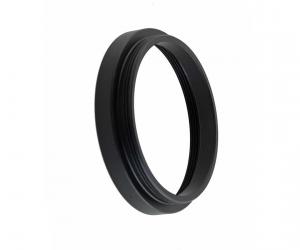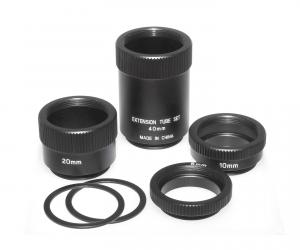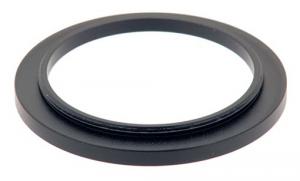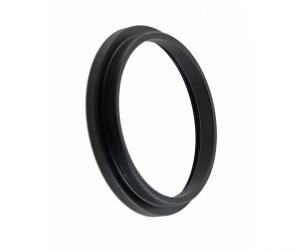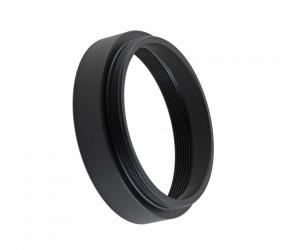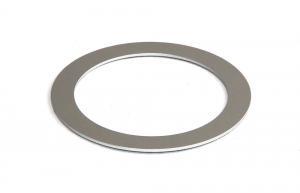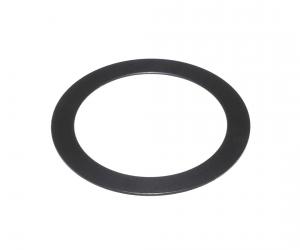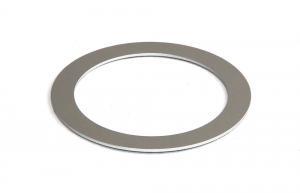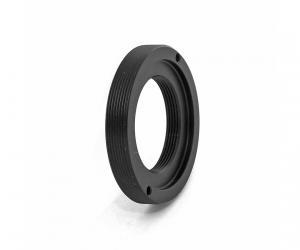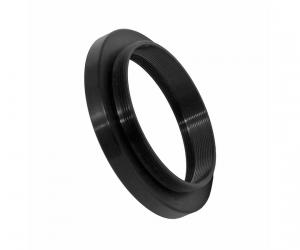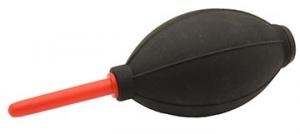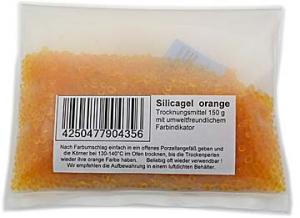- Telescopes
- Overview:
Telescopes - Achromatic Refractor
- Apochromatic Refractor
- Overview:
Apochromatic Refractor - ED Refractor - less color aberration than an achromatic
- SD APO - color free 2-element APO objective
- EDT APO - 3 element ED objective
- High End APO with 3-element APO objective - no color aberation
- Flatfield APO with flat field for Astrophotography
- All Apos and EDs from all manufacturers - large overview
- TS APO and ED from Japan with high quality optics
- Overview:
- Newtonian Telescopes
- Dobsonian Telescopes
- RC Ritchey Chretien Telescopes
- Casssegrain Telescopes
- Reflektor Telescopce with Lens Correcture
- Maksutov Cassegrain Telescopes
- GoTo Telescopes
- Solar Telescopes H-Alpha
- Overview:
- Mounts Tripods Rings Rails Power Supply ...
- Overview:
Mounts Tripods Rings Rails Power Supply ... - Mounts Equatorial with GoTo
- Mounts Equatorial without GoTo
- Mounts Azimutal with GoTo
- Mounts Azimutal without GoTo
- Mounts GoTo - Harmonic Drive
- Travel mounts for astro imaging
- Tripods Piers Polar Wedges
- Mount Control & Electronics
- Dovetail Clamps, Plates and Mount Adapters
- Tube Rings
- Power Supply
- Counterweights Balance Weights
- Mount Accessories - Other
- Overview:
- Telescope Accessories
- Overview:
Telescope Accessories - Eyepieces
- Barlows & Reducer Lenses
- Diagonal Mirrors and Prisms
- Binocular Viewers
- Finder Scopes
- Telescope Collimation and Test
- Cleaning Tools
- Transport and Storage
- Dust protection for Telescopes & Accessories
- Stray Light Protection
- Dewcaps and Heater
- Focusers, Adapters, Motorfocus
- Telescope DIY & Improvement
- Other telescope accessories
- Replacement Parts
- Overview:
- Filters
- Overview:
Filters - Color Filters and Color Filtersets
- Nebular Filters for Visual Observing
- Neutral-Density and Polfilter
- Photo Narrowband Nebular Filters
- Photo Broadband Filters
- Photo Planetary Filters
- Photo R-G-B and IR Cut Filters
- Photo - Filtersets
- Photometric Filters
- Clip Filter for DSLR Cameras
- Filter Wheels and Filterslider
- Solar Filters for white light
- Solarfilter for H-Alpha and Calcium
- Overview:
- Adaptors
- Overview:
Adaptors - Adapter 1,25" and 24,5mm
- Adapter 2"
- Adapter T2 - M42x0.75
- Adapter M48x0,75
- Adapter M54
- Adapter SC
- Adapter M63
- Adapter M68
- Adapter to other Threads
- Adapter Extensions
- Adapter camera bayonet
- Adapter Objective Filterthread
- Adapter Quick Changing , Rotation
- Adapter Eyepiece Projection
- Adapters Tilting
- Overview:
- Astrophotography and Photography
- Overview:
Astrophotography and Photography - Cooled Cameras
- Cameras without Cooling
- Deep-Sky Cameras uncooled
- Set-Offers Camera, Filter, Wheels
- Acessories for Cameras
- Travel mounts for astro imaging
- Imaging Correctors for Telescopes
- Autoguiding Cameras & Sets
- Everything for Guiding
- Focusing aids - Bahtinov mascs
- Flat Field foils and boxes
- Lenses for Cameras
- Piggyback Camera Holder
- Camera Bags, Photocases & more
- Digital Camera and Smartphone Adapter
- Other photo accessories
- Overview:
- Binoculars, Spotting Scopes, Microscopes, Range Finders
- Overview:
Binoculars, Spotting Scopes, Microscopes, Range Finders - Spotting Scopes and Acessories
- Roof Prism Binoculars
- Binoculars with Porro prisms
- Binoculars from 100mm Aperture
- Binoculars with 1,25 inch eyepieces
- TSMX APO Binoculars
- Binoculars for Astronomy
- Binoculars Hiking Bird watching
- Monoculars - Opera Binoculars
- Accessories for Binoculars
- Range Finders
- Microscopy
- Bags for Phototripods & Binoculars
- Overview:
- Phototripods and Binomounts
- Books, Software
- Overview:
Books, Software - Books for Astronomy Beginners
- Star Charts and Planispheres
- Books about our Solar System
- Observing Tips for Amateurs
- Popular Astronomy Literature
- Teaching material
- Astrophotography books
- Telescopes, Observatories, Construction
- Calendars Yearbooks
- Software, Star Charts
- Books for Microscopers
- Books Nature and Animals
- Nature Photography TimeLapse
- Overview:
- Night Vision, Magnifiers, Weather, Domes & more
- Beginner Astronomy and Gift Ideas
- Second Hand & Special Offers
- New products
Manufacturer: QSI
Product number: QSI660wsg8
EUR6909.00new
EUR 6.909,00
incl. 19 % VAT (DE)
The VAT indicated refers to that applicable in Germany. After logging in, the VAT amount is adjusted to the applicable VAT of the stored delivery country. Therefore, the final price may vary accordingly.
excl. 6.95 € shipping costs (DE)
more details to the shipping costs ...Please log in to calculate shipping costs to your country.
There are no reviews for this product
- Details..
- Technical data..
- In the box..
- Reviews..
- Manufacturer infos..
- Safety informations..
CCD-cameras by QSI:
Among astrophotographers CCD-cameras from QSI (Quantum Scientific Imaging) count as the highest-quality and most prestigious of their kind. This is not only due to their thoughtful construction, but also their aesthetic and processing quality. The main feature of the 600 series are middle-sized CCD sensors with very low noise and high dynamic range. The camera-specific electronics, from which other manufacturers of CCD cameras often show restrictions, are also of the highest quality. As a result the system noise as opposed to the sensor noise is in practice irrelevant; it amounts to only 1/30 of the sensor noise. Whenever then there is a very weak signal and only a few photons hit the sensor - and this is exactly the case with deep-sky photography - QSI CCD cameras shine. With this camera it is possible to get the maximum out of your equipment and location. Next to an uncompromising build quality QSI cameras are also sursprisingly compact and very energy-efficient, in spite of their powerful cooling.The QSI 660wsg-8 in summary:
The QSI 660wsg-8 offers a comprehensively equipped high-end CCD camera that leaves no desires open. Next to the installed brand-new Sony sensor ICX694 with a max. quantum efficiency over 75% the camera has a 8 position filterwheel integrated into the aluminum body, which permits a high level of flexibility in changing your filters and also allows an unvignetted image even with fast optical systems. Directly connected to the filterwheel one finds a high-quality off-axis guider, which not only spares you valuable optical space, but also inconvenience in fitting adaptors. To minimize dark current the QSI-660wsg-8 has a powerful two-element TEC cooling-system, with which a sensor cooling of max. 45 °C relative to ambient temperature is achievable. Through an optional liquid heat exchanger one can even reach a Delta-T of 55 °C. Included with the camera is an extensive driver and software bundle, which provides immediate use.The brand new Sony Sensor ICX694:
Sony CCD sensors rank among the most light-sensitive and noiseless on the market. The ICX694 features an extremely high resolution of 2758x2208 (6.1 MP) with a pixel-size of 4.54 microns, as well as an outstanding maximum quantum efficiency of 77% (at 560 nm). Alongside the remarkably low dark current (<0.002 electrons per second at -10 °C), the sensor has an antiblooming-gate, microlenses and a fast electronic shutter.Integrated 8-Position Filterwheel and Off-Axis Guider:
The QSI 660wsg-8 features an integrated a filterwheel with 8 positions for 1.25" filters. One can also for example insert next to the standard filter set LRGB all custom narrowband filters H-Alpha, Olll, Sll und Nll, without ever changing the filters. One can also use this filterwheel with unmounted 31 mm filters. A pre-installed internal filterwheel has many advantages: The filters are protected from dust and pollen throughout the entire year. Due to the compact build one has more optical space available and thereby more flexibility in choosing correctors. As the filter lies close to the sensor, an unvignetted, fully illuminated field of view is guaranteed, also with small and inexpensive 1.25" filters, even with fast optical systems.The similarly integrated off-axis guider solves many problems that occur when guiding with a separate guide scope, but also brings advantages for astrophotographers familiar with OAGs. Through the combination of primary scope and guide scope differential flexure is prevented and guiding is significantly more precise. Thanks to the large prism and the position in front of the filters, one will successfully and continuously be able to find guide stars.
Energy-efficient, powerful CCD Sensor Cooling:
A further strength of the QSI 660wsg-8 is its energy-efficient and superior cooling system. It consists of a 2-element TEC system and is equipped with intelligent, programmable fans. It can reach a cooling performance of 45 °C relative to ambient temperature; the temperature is then maintained within a tolerance of +/- 0.1 °C, which is crucial for creating a dark-frame library. With an optional liquid heat-exchanger the cooling performance will be further enhanced to a Delta-T of 55 °C.So that such a drastic temperature is without condensation or frost forming on the sensor, the latter is seated within a hermetically sealed chamber, filled with ultra-dry noble gas.
Astrophotographic results obtained with this camera on Astrobin
Here you can find some astrophotographs made with this camera model: Link to Astrobin| Sensor: | Sony ICX 694 |
| Sensor dimensions: | 12.48 mm x 9.98 mm |
| Pixel size: | 4.54 µm |
| Anti-blooming: | 800x |
| Resolution: | 2758x2208 (6.1 megapixels) |
| Full Well Capacity: | 19000 e- |
| Quantum efficiency: | 77% at 560 nm |
| Shutter: | Electronic and mechanical shutter |
| Cooling: | 45 °C below ambient temperature |
| Dark current: | <0.002 electrons per second at -10 °C |
| Read-out time at 1x1 binning: | <9 seconds in high-quality mode |
| Read-out noise: | <3 electrons RMS |
| Camera-sided connection: | C-Mount or T2 thread |
| Filter wheel: | Integrated 8-position filter wheel |
| Power consumption: | 2 A (24 Watts) at 12 V |
| Connection: | USB 2.0 High Speed |
Astrophotographic results obtained with this camera on Astrobin
Here you can find some astrophotographs made with this camera model: Link to Astrobin| Manufacturer / Importeur: | Atik cameras Uniperssoal Lda |
| Street: | R. Horta dos Bacelos 15 |
| ZIP / City: | 2690-390 Santa Iria De Azoia |
| Country: | Portugal |
| Telefon number: | +351 210868596 |
| Email: | sales@atik-cameras.com |
| Website: | www.atik-cameras.com |
Safety informations: PDF Download
Recommended accessories
Adaptors
Cleaning & Collimating
Customers who bought this product also bought...
Reviews












